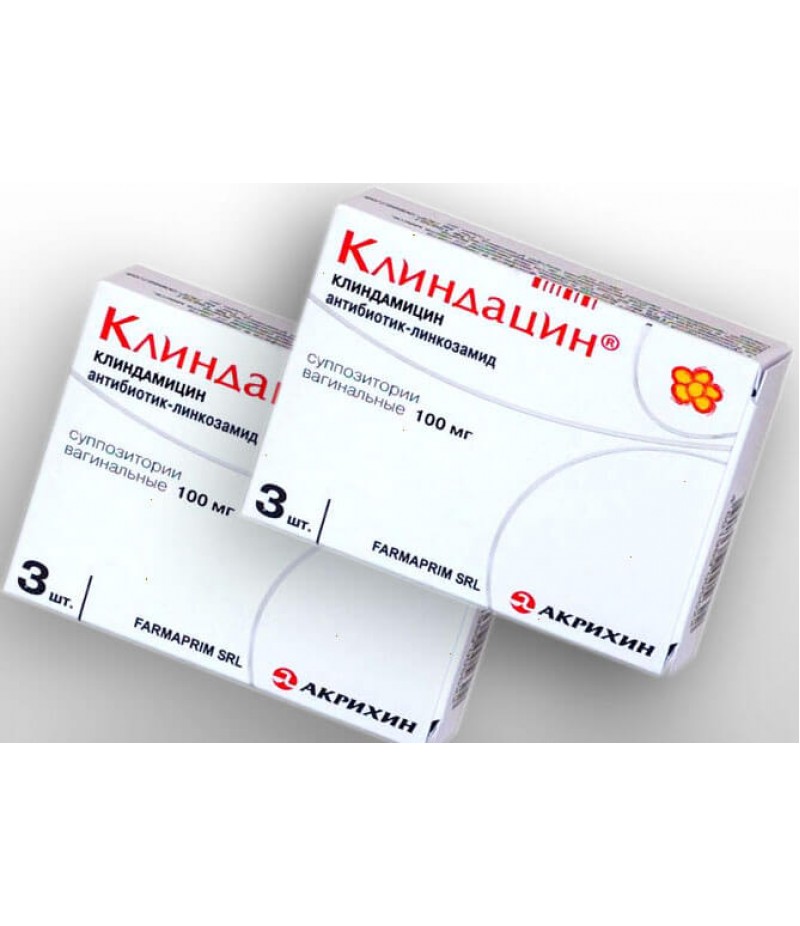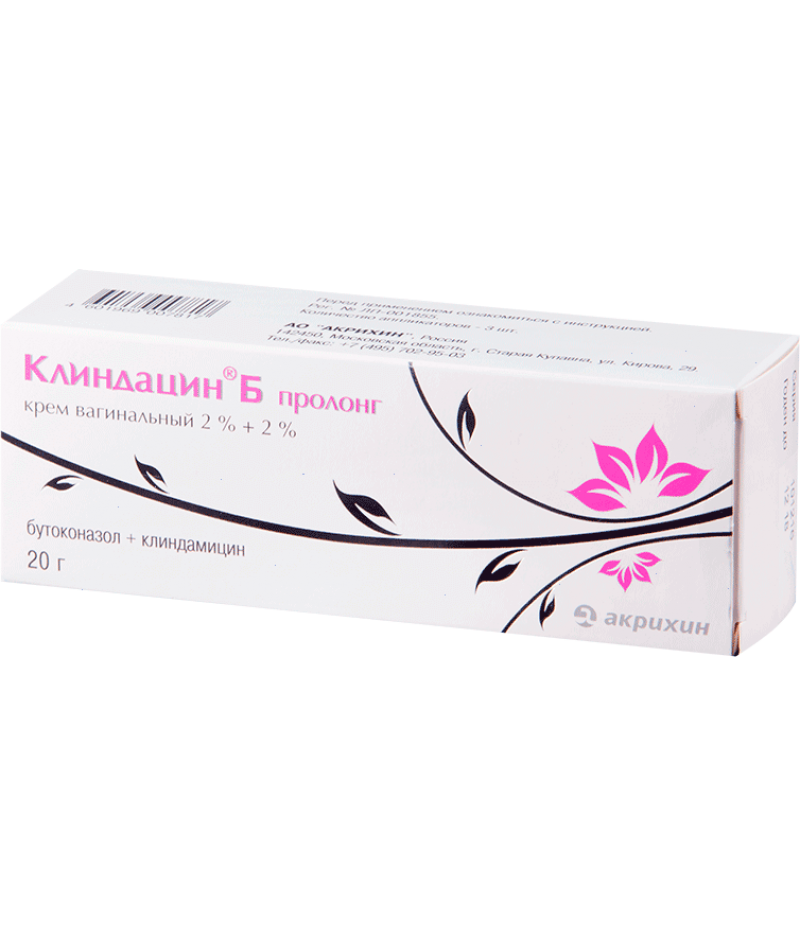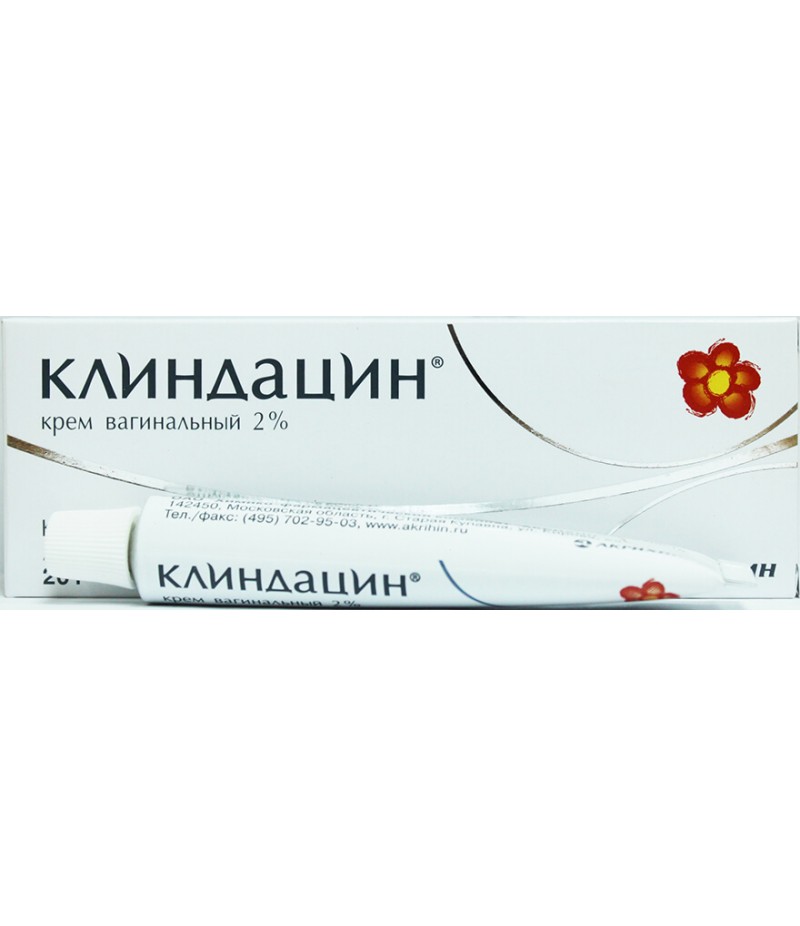Clindacin supp 100mg #3
- $26.95
- 3 or more $25.87
- Availability:In Stock
Instruction for ClindacinReed more and buy Clindacin on this pageComposition1 dose (5 grams) of the cream includes 100 mg of clindamycin phosphate. In addition: 1/2-propylene glycol, sodium benzoate, castor oil, polyethylene oxide..
Tags: supp
Instruction for Clindacin
Reed more and buy Clindacin on this page
Composition
1 dose (5 grams) of the cream includes 100 mg of clindamycin phosphate. In addition: 1/2-propylene glycol, sodium benzoate, castor oil, polyethylene oxide, emulsifier.
1 suppository (suppository) includes 100 mg of clindamycin phosphate. In addition: semisynthetic glycerides (such as "Suppocyr", "Vitessol", "Estarinum").
Form of issue
The medicine Clindacin is made in the form of vaginal cream in aluminum tubes of 20 grams (with 3 applicators in the kit) or 40 grams (with 7 applicators in the kit), and also in the form of suppositories of 3 pieces per pack.
pharmachologic effect
Local antibacterial (broad spectrum).
Pharmacodynamics and pharmacokinetics
Clindacin, which includes as an active ingredient a lincosamide antibiotic, clindamycin, is a local remedy used in gynecology for the treatment of bacterial genesis of bacterial vaginosis. The mechanism of action of local drug dosage forms (cream, suppositories) is directed to the violation of intracellular protein synthesis in a microbial cell occurring at the level of a large ribosomal subunit of 50S.
The spectrum of action of clindamycin is quite wide. In medium doses bacteriostatic efficacy of the drug against many microorganisms is manifested. At higher dosages, clindamycin is characterized by a bactericidal action aimed at the destruction of some bacterial strains.
The main activity of clindamycin is observed with respect to microorganisms leading to the formation of bacterial vaginosis, including: Mobiluncus spp. (mobiluncus), Gardnerella vaginalis (Gardnerella vaginalis), Bacteroides spp. (bacteroides), Peptostreptococcus spp. (peptostreptococcus), Mycoplasma hominis (Mycoplasma hominis).
Insensitive to the effects of clindamycin are strains of Candida albicans (thrush) and Trichomonas vaginalis (vaginal trichomonas).
Intravaginal (inside the vagina) a single injection of clindamycin at a dose of 100 mg leads to a systemic absorption of approximately 4% of the drug (about 4 mg). The plasma Cmax of clindamycin is 20 ng / ml.
Indications for use
Cream and candles Clindacin are indicated for use with the purpose of local treatment of bacterial vaginosis, which developed due to the action of microorganisms sensitive to clindamycin.
Contraindications
Both dosage forms of Clindacin are contraindicated for women in the first trimester of pregnancy, as well as for patients with personal hypersensitivity to clindamycin or lincomycin.
Side effects
Some patients with the use of Clindacin experienced the development of negative side effects, including: sensation of itching in the vagina, the formation of maculopapular rash, the emergence of urticaria, the development of cervicitis or colpitis (vaginitis), vulvovaginal irritation, burning sensation.
From the hemopoietic system in rare cases observed: thrombocytopenia, reversible leukopenia, eosinophilia, neutropenia, agranulocytosis.
In the case of significant systemic absorption of clindamycin, systemic side effects, including the formation of pseudomembranous enterocolitis (very rarely), are possible.
Instructions for use Clindacin (Method and dosage)
Cream Clindacin, instructions for use
Cream Clindacin is intended for intravaginal use with the help of a special disposable applicator, included in the kit. The recommended single daily dosage of the cream is 100 mg of clindamycin (the volume of the fully filled applicator). The preparation is best administered in the evening hours (before bedtime). The duration of the treatment course, as a rule, takes from 3 to 7 days.
Using the applicator
For the correct dosing and administration of the cream in the vagina, it is recommended to use disposable applicators in the package with the drug and adhere to the technique of their use, namely:
remove the protective cap from the tube with a cream;
screw on its place a disposable plastic applicator;
squeeze the opposite end of the tube to fully fill the applicator (the applicator is considered fully filled when its self-moving piston reaches the stop);
lying on his back, insert the applicator into the vagina as deeply as possible;
gently push the applicator onto the plunger until it is completely emptied;
Carefully remove the used applicator from the vagina and discard it.
Suppositories Clindacin, instructions for use
Clindacin candles are also used intravaginally, with a single daily administration of the first suppository preferably in the evening hours (before bedtime). The duration of the treatment course, as a rule, takes from 3 to 7 days.
For proper use of the preparation, one suppository should be freed from the outer contour pack, cutting the protective film along the contour of the candle. Then in the position of the body lying down, insert the suppository into the vagina as deep as possible.
Overdose
Due to low absorption of clindamycin due to its intravaginal use, the likelihood of overdose is extremely low.
Interaction
With a combined application with clindamycin, the efficacy of aminoglycosides (Streptomycin), Rifampicin and Gentamycin is enhanced.
Clindamycin is incompatible with Aminophylline, Erythromycin, Magnesium Sulfate, Ampicillin, Calcium Gluconate, Diphenylhydantoin Derivatives and Barbiturates.
The effects of clindamycin increase miorelaxation caused by the action of n-holinoblokatorov.
Storage conditions
Cream Clindacin should be stored at ambient temperatures up to 20 ° C, suppositories stored in a temperature range of 15-25 ° C.
Shelf life
Both dosage forms of the drug will retain their medicinal qualities for 3 years.
special instructions
In the case of prolonged use of the drug, the possibility of excessive growth of microorganisms insensitive to its active ingredient, in particular fungal strains of Candida, is allowed.
It is not recommended to combine the use of Clindacin with other intravaginal drugs.
Due to the minimal, but still systemic absorption of clindamycin (about 4%), against the backdrop of its topical application, there may be diarrhea, which requires the drug to be discontinued.
Children
Safety and efficacy profiles of Clindacin in pediatric practice have not been established.
In pregnancy and lactation
According to the official instruction, clinical studies of the safety of Clindacin during pregnancy in the first trimester were not conducted, and therefore, its use in this period is not recommended. Clindacin treatment of women in the second and third trimester of pregnancy is allowed only in cases of significant excess of the benefit of such therapy for the mother, in comparison with the possible negative consequences for the fetus.
Despite this, in gynecology, there is a practice of prescribing Clindacin in the second and third trimester of pregnancy, since some vaginal infections undoubtedly need such treatment. Considering reviews about this drug in the form of a cream, as well as reviews of candles during pregnancy in these periods, it is worth noting that in the vast majority of cases, therapy with Clindacin resulted in getting rid of an infectious disease without any negative consequences for the future mother and fetus.
The isolation of intravaginal clindamycin with breastfeeding mother's milk has not been studied, and therefore, its appointment during lactation is possible only if the benefits of such treatment for a mother are positively compared with the possible risks for the newborn.
Reviews about Clindacin
Most women who use this drug for the treatment of bacterial vaginosis, I leave positive feedback about the candles of Clindacin, including patients forced to resort to this drug during pregnancy in the II and III trimester. Reviews about the cream of Clindacin are not so numerous, but also are positive in terms of the effectiveness and safety of this medication. Summarizing the general impression of patients about Clindacin's therapy of bacterial vaginosis, we can confidently recommend it for use according to indications, but only after consulting a specialist doctor.



